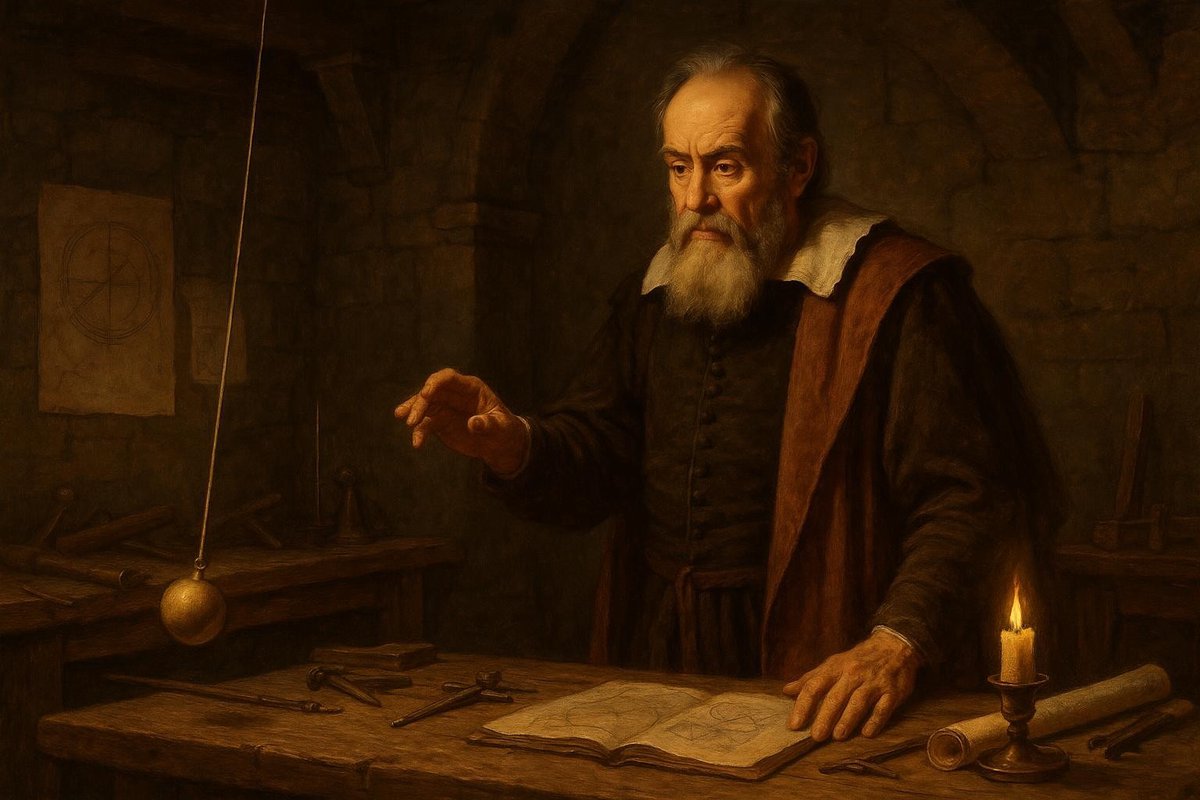
Curiosity and the Pendulum: Galileo’s Hypothesis
What if the simple swinging of a church lamp could unlock the secrets of time itself? Galileo Galilei, a young and inquisitive man, stood in Pisa’s Cathedral, entranced by the rhythmic motion of a swinging lamp. That was the moment that sparked his lifelong quest to understand time through the motion of pendulums.
Galileo hypothesized that a swinging pendulum could keep time accurately. He believed that the regularity of its swings could serve as a natural timekeeper, challenging the limitations of existing time-measuring methods.
- Galileo observed the lamp’s steady swings, noting their consistency.
- He questioned why the swings seemed uniform despite varying amplitudes.
- Galileo speculated that this could lead to a new way to measure time.
His hypothesis was revolutionary in a world reliant on sundials and inconsistent water clocks, laying the foundation for a new understanding of timekeeping.
Setting the Stage: Method and Experimentation
Galileo’s fascination led him to construct his own pendulum experiments. In his modest workshop, he set up elaborate setups to test his theory.
His equipment was simple, but his method was ingenious. By suspending weights from strings, he could meticulously observe and measure swings.
- Galileo varied the length of strings to observe changes in swing time.
- He meticulously timed swings using his pulse, demonstrating remarkable ingenuity.
- Galileo conducted these tests repeatedly, ensuring accuracy in his observations.
Each experiment brought him closer to unveiling the pendulum’s potential as a timekeeper, moving science beyond assumptions and conjecture.
Results and Reactions: A Shift in Understanding
Galileo’s findings were groundbreaking. He discovered that the time taken for each swing was independent of its amplitude, a principle now known as isochronism.
This discovery fascinated the scientific community, challenging existing beliefs about motion and time.
- Galileo’s findings were initially met with skepticism by some contemporaries.
- Over time, his work shifted scientific paradigms, inspiring future innovations.
- His findings laid the groundwork for the development of pendulum clocks.
Galileo’s work was not just a study of mechanics. It was a testament to human curiosity and the relentless pursuit of understanding.
Implications: The Legacy of Galileo’s Pendulum
Galileo’s pendulum experiments did more than just explore motion; they transformed how we perceive time.
The implications of his work were far-reaching, influencing not only science but also everyday life.
- His discoveries informed the design of more accurate timekeeping devices.
- The pendulum clock became a standard, revolutionizing how society organized time.
- Galileo’s legacy inspired generations of scientists to challenge established norms.
In unraveling the pendulum’s secrets, Galileo left an indelible mark on the world, showing us that with curiosity and tenacity, even the simplest observations can lead to profound revelations.
Fuel Someone Else’s Curiosity
Let Galileo’s story inspire you to look deeper into everyday phenomena. Share this article with someone who loves a good mystery or thrives on curiosity. Who knows, you might ignite the spark of discovery in the next great thinker.

Leave a Reply